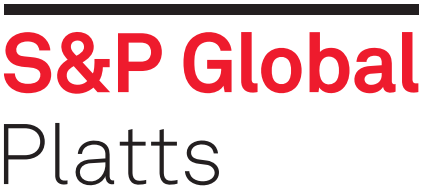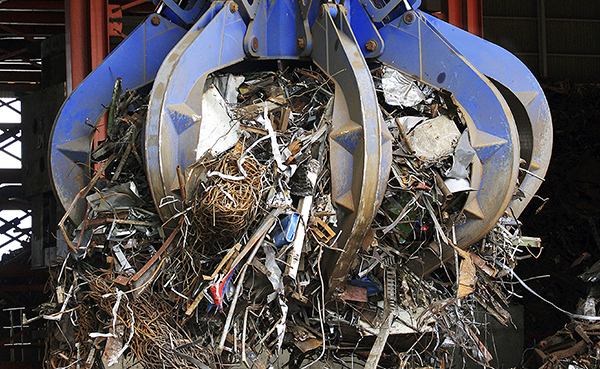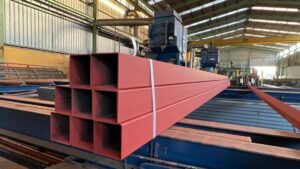EU exports of waste, including metals scrap, to non-OECD countries may be restricted in a move to create a robust and integrated market for secondary raw materials, in line with the concepts of a circular economy, the European Commission said Nov. 17.
That is geared to help the EU meet its so-called ‘Fit for 55’ package of legislative proposals to reduce greenhouse emissions by 55% by 2030, as compared to 1990 levels, the EC said.
Under a proposed revised legislation on waste shipments, including steel and non-ferrous scrap, EU scrap metal exports to third countries will be allowable only if they can manage these sustainably, the EC said in a formal communication on the subject to the European Parliament, European Council, the European Economic and Social Committee and Committee of the Regions.
Under the proposal, all EU companies that export waste outside the bloc should ensure that the facilities receiving their waste are subject to an independent audit showing they manage the waste in an environmentally sound manner.
“The EC will rely on audits to be conducted in third countries,” EC Executive Vice-President Frans Timmermans said at a news conference on the proposed revision.
As well as laying down stricter rules on the export of waste to non-OECD countries, the proposals should improve monitoring and enforcement of rules on waste exports to OECD countries, the EC said.
The new directive will require collaboration between EU member states and will cover exports of waste paper, plastics, glass, textiles and wood as well as metals, it said.
Largest ferrous scrap exporter
The EU is the world’s largest exporter of ferrous scrap, the use of which can assist in the decarbonization of steel production.
The region exported 17.4 million mt of steel scrap in 2020, as well as 1.6 million mt of copper, aluminum and nickel scrap and 0.1 million mt of precious metals scrap, the EC said. Exports of both ferrous and non-ferrous metal scrap are expected to rise gradually to 2030, with prices also expected to remain stable or rise, according to data presented.
According to the proposal, the new regulations should be of unlimited duration and should be implemented with a start-up period from 2024 to 2027, followed by full-scale operation, and will be directly managed by the EC.
Tepid market reaction
The new proposal falls short of a strict or even blanket export ban on certain types of steel and metals scrap which had been feared by some trade quarters and could possibly have distorted trade.
Nonetheless, it met with a tepid response from the market, due mainly to its lack of specific proposals. It defined a list of hazardous materials, including certain non-ferrous metal products: however, exports of EU hazardous waste to non-OECD countries are already prohibited under existing legislation.
“For the moment it does not mean much. None of this is very precise,” one EU recycler told S&P Global Platts.
An EU trader said: “Basically same of what already in place for non-OECD countries, hence not great change at all. I now rather expect more exporters to be in the market so to exploit the weaker EUR.”
For one EU scrap exporter, “the issue will be how scrap exporters will react to it.” He noted it makes little sense to stop export of heavy melting scrap grades that are little used in Europe but are exported to Turkey. “A ban would affect the environment because this un-exported scrap will be lying around unused. Those decisions would run counter to WTO rules.”
A Turkish agent noted that without more investments in electric arc furnace steelmaking in the EU, the region will not be able to consume all its scrap.
Steel scrap is used mainly in EAFs which emit less GHG that blast furnaces based on iron ore and coal inputs.
“There are strong incentives for the steel sector in the EU to use more steel scrap in the future,” the EC said in an impact assessment document accompanying its main proposal, noting the region “has a high potential to absorb additional scrap.”
Aluminum sector fears ‘unfair’ competition
European Aluminium, a producers’ association, said the Revision of the Waste Shipment Regulation is an important step towards further elevating environmental standards and attracting more investments to the European recycling value chain. However, EA urged the EC to level the playing field for waste exported outside Europe by clarifying the ‘equivalent conditions’ for exported waste.
“Both environmental as well as labor rights must form the basis of equivalency,” EA said in an emailed statement to Platts. “Without clear guidelines on how scrap should be recycled, there is no level playing field. Losing valuable resources to competitors in countries with less ambitious environmental and health and safety regulations means unfair competition for high quality European operations.”
“To facilitate the European circular economy, the EU must also simplify and harmonize the administration for the intra-EU shipments of waste and address the missing Green Listed codes,” it said.
Export destinations
Ferrous metal waste is by far the largest category of waste exported by the EU in both tonnage and value terms, with Turkey the largest single country destination. However, despite the large tonnage of ferrous metal scrap exported to third countries, a significantly larger volume of such wastes is shipped between EU Member States, the EC noted.
According to EU Comext data, 74.44% of the EU’s ferrous metal waste went to OECD countries and 25.56% to non-OECD nations on average in 2018 and 2019. The picture was, however, reversed in the case of non-ferrous metals waste, with 28.92% going to OECD nations and 71.08% to non-OECD nations during this period.
Non-ferrous metals wastes volumes from the EU doubled between 2004 and 2019, with China the largest recipient, with other major recent recipients including the US and India, according to the EC data.
— Diana Kinch, Wojtek Laskowski and Annalisa Villa






